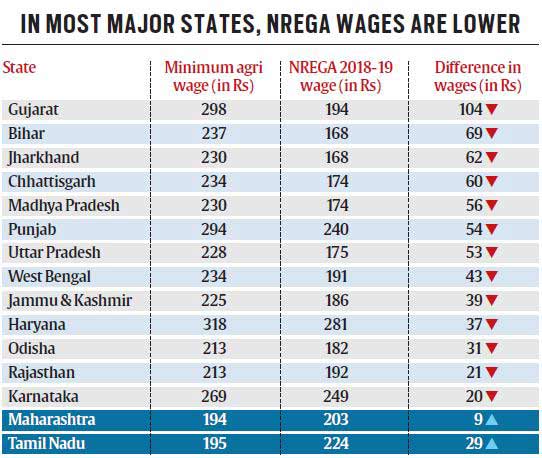7667766266
enquiry@shankarias.in
What is the issue?
The gap between the minimum agricultural wages and MGNREGA wages is growing steadily in the last few years.
What are these wages meant for?
What is the discrepancy?

What is the latest revision?
Why is the disparity?
What are the recommendations made?
What is Finance Ministry's argument?
Why is raising NREGA wage important?
Source: Indian Express